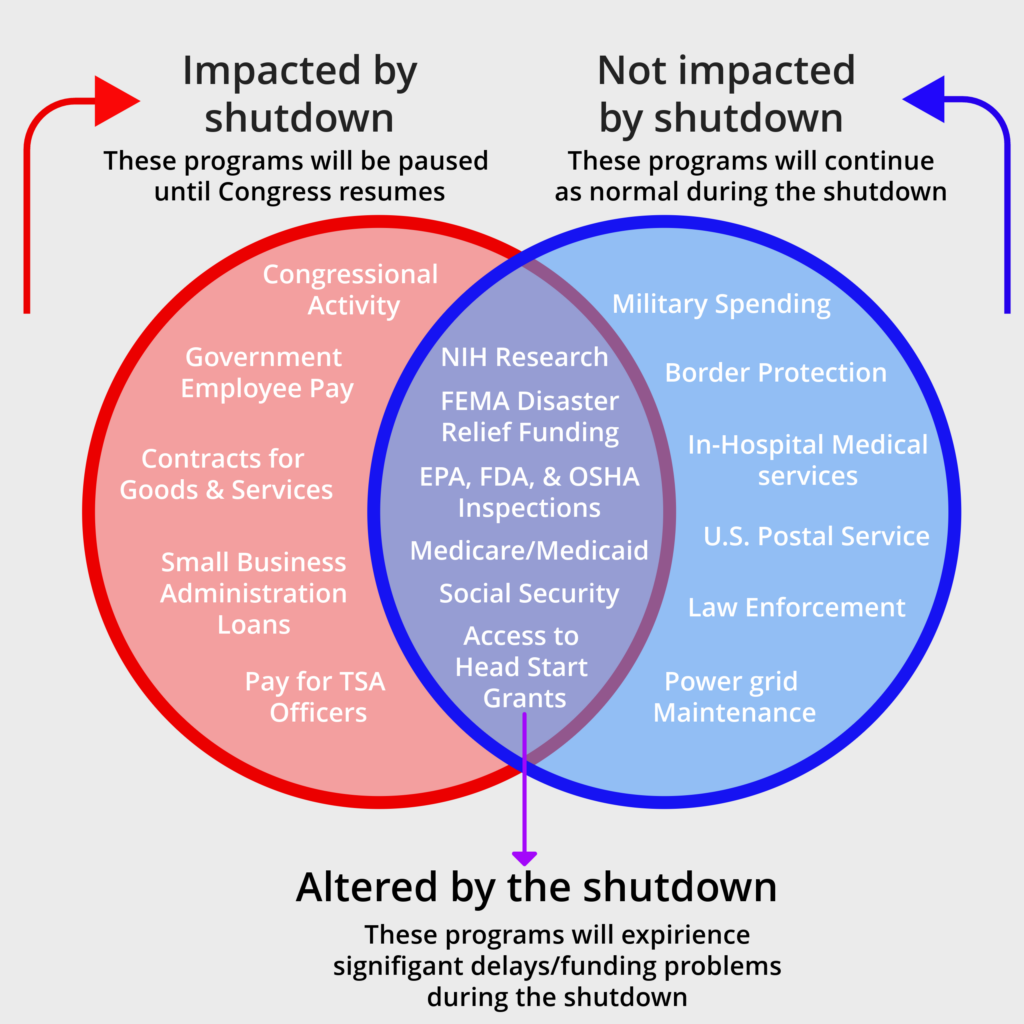The House, Senate, and the Biden administration have until midnight Saturday, September 30, to either find a way to pass 12 appropriations bills (so far, they have passed one), including funding levels and policy riders, or agree to a short-term continuing resolution (CR) to create a runway to fund the government in the new fiscal year. As that night approaches, neither option looks likely, and we turn to the question of how long a shutdown would be. With centrist House Republicans unhappy, the House Freedom Caucus using the shutdown as a political hammer to derive varying “wins” and a strongly united Democratic party, House Speaker Kevin McCarthy (R-CA) is in for a long ride while the American people prepare for a government shutdown.
Speaker McCarthy has been in a challenging position since he assumed the leadership role, and he continues to struggle to find common ground within his own party. The House Republican conference with its narrow majority has proven impossible to govern as ideologically emboldened members make unachievable legislative demands in the current time crunch and threaten to oust McCarthy if their demands are not met. But this inside-the-Beltway drama will be felt in constituencies coast-to-coast. Concerns about a shutdown are spreading; according to several recent polls, 7-in-10 voters are worried about a government shutdown.
Tension inside the GOP stems from the many House Republicans who dislike the proposed 2024 fiscal spending plan Speaker McCarthy and President Biden agreed upon to resolve the debt ceiling crisis. Since then, the chamber’s most conservative members have taken matters into their own hands. They are demanding the new spending bill be roughly $120 billion less than expected, opposing any “blank check” funding for Ukraine, include the House-passed immigration bill called the Secure the Border Act (H.R.2), snuffing out Biden administration policies they consider “woke” and pursuing an impeachment investigation into President Biden.
While most agree that seating all these groups at the decision table will do little to avert a shutdown, not everyone sees eye-to-eye on what a solution entails. Although not all government operations come to a halt during a shutdown, the side effects can be damaging – operationally and politically. Under a shutdown, federal employees who are not a part of essential services will receive no pay until appropriations are restored, at which time they will be made whole. Some federal programs including Social Security or Medicare will remain available but will experience disruptions. The shutdown will also interfere with IRS payments and the looming October 15 deadlines for quarterly tax payments and extensions. Programs funded through annual appropriations but are not categorized as “exempted work,” such as military training, Smithsonian museums, national monuments, and federal parks are entirely shut down.

During the shutdown, essential services such as law enforcement, aviation safety and security services and national defense will continue, and each federal agency has a plan on how to continue until appropriations are re-established. But the Department of Defense’s civilian employees, for example, will be without work for the shutdown’s duration. One constituency that will see no disruptions—members of Congress. They will continue to receive paychecks, but their respective staff will not, although congressional staff will receive back pay once appropriations are restored.
Ultimately, failure to pass all 12 spending bills is nothing new and has been happening consistently since the 1970s, but the pressure on Speaker McCarthy and the gap between parties of this magnitude are. The impact of a shutdown, despite some ultra conservative members’ counter-messaging, is a ripple felt by Americans everywhere and creates a fractured government that cannot work until Congress passes the appropriations necessary for the 2024 fiscal year.
Randall Gerard has a deep bench of relationships in our nation’s capital and in state capitals, spearheading government relations campaigns for a range of Cogent clients on tax, energy, environment and telecommunications policy issues. Randall is an active member of the finance committee at the Republican Governors Association and maintains close ties to governors and their staffs across the country, participating in key leadership conferences throughout the year. For Randall’s complete bio, click here.
